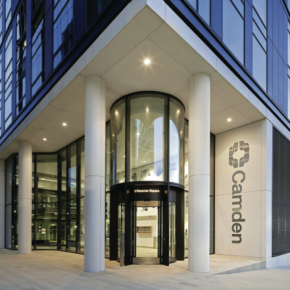
Committing to sustainable success in the public sector
Sustainability measures and practices in both the public and private sectors are making great progress but the driving forces and decision-making processes behind the upward trend could not be further apart. Martin Townsend, director of sustainability, BRE Global discusses in the December 2016 issue of PSB Magazine…
Sustainability in the private sector, largely fuelled by a passion for increased efficiencies with an eye on a need for financial prudence, is often celebrated. It is important, however, to take a moment to reflect on wider achievement; the private sector shouts loudly about its successes, while silently in the background, without fuss, I’m forever seeing change which is just as great and just as inspiring in the public sector.
This is interesting as the desire to operate as diligently as possible is understood by all but, with the heightened pressure to maintain multiple public services from ever-diminishing budgets, many local authorities could use this as a justifiable reason to place sustainability on the back burner.
I recently attended the SMART cities conference run by the Telegraph and the local authorities that left me most impressed weren’t the ones that received Government funding to try new approaches, but drove change and innovation by sheer hard work, using IT systems to give the public a better experience, providing more efficient ways of working. These efforts sometimes go unnoticed as best practice until they are mentioned in conversation with their peers.
We have seen sustainable practices in the public sector go from strength-to-strength in recent years, often driven by one person or one team who are simply motivated by the desire to do something better for the greater good. In spite of a lack of regulatory support to drive and embed sustainability in the public sector, organisations across the country are showing just what can be achieved in terms of sustainable development.

“What we now need to do is a further increase momentum and awareness of sustainable processes and make sure best practice becomes normal practice.” Matin Townsend
Camden Council is a prime example of this. The London authority places sustainability at the heart of its designs for its new mixed use Five Pancras Square headquarters at King’s Cross Central. A building that anyone would be proud to occupy.
The council wanted to lead by example and therefore elected to use BREEAM as a way to inspire the design team, to go beyond the regulatory minimum – not only for the usual suspects of waste, but also to divert waste from landfill, use responsibly sources materials and employ Life Cycle Analysis to identify internal finishes and materials with high durability and longevity.
An important thread as a client responsible for the day-to-day running of the building was maintainability, which resulted in a passive design principle, which avoid complicated engineering solutions and associated controls, in order to enable the building to be simple and efficient to operate. Rather than over-engineer facades to counteract solar gain which would be alleviated once an adjacent office building was completed, glazing was maximised to increase daylight entering the building and reduce reliance on artificial lighting.
Further passive design features include displacement ventilation aided by high floor/ceiling heights and augmented by an underfloor supply to office floors and library. Natural ventilation is facilitated by openable windows at office levels to offset cooling requirements. High level windows are opened by the Building Management System when in natural ventilation mode or to purge heat fro the building’s exposed concrete thermal mass overnight.
The result was that Camden Council was able to deliver fantastic new exemplar of sustainable design at no additional cost to taxpayers in the borough.
The university of bristol has also demonstrated that it is possible to sustainably enhance the performance of existing public sector buildings with the ongoing refurbishment of a Grade II Listed Georgian townhouse.
The building at 8-10 Berkeley Square is being upgraded for occupation by the University’s Law School from 2017. Significant efforts have been made to make the building sustainable and future-proof without compromising the historic elements of the townhouse.
Due to the listing, for example glazing could not be replaced not secondary glazed in most spaces. However, a thermal comfort assessment was undertaken to optimise the location of radiators in relation to furniture, windows and people’s seating positions to ensure that natural ventilation would work in summer and drafts were not a problem in winter.
Meanwhile, the University of East Anglia’s Adapt Low Carbon Group looked close to home to ensure its Enterprise Centre was as sustainable as possible.
The building’s foundations include not only 100% recycled aggregate but a low carbon concrete mix, and insulation is 100% recycled newspaper. Other local and natural materials used in Norfolk flint, hemp fabric, re-processed glass, re-purposed mahogany benches, reclaimed oak, clay plaster and nettle boards – all sourced from suppliers situated under 30 miles from the site.
The project’s design achieved 90.8% of available BREEAM credits giving it an Outstanding rating. This was the result of the project team, given freedom by the client to innovate in all aspects, taking fresh approach by framing every design decision using sustainability and exemplary low carbon solutions.
This approach ensured the project goal of achieving 75% lower carbon outputs than similar buildings was achieved. Though no small amount of passion and creativity, the public sector has shown sustainability is achievable in spite of the most testing financial circumstances and, in doing so, is driving innovation in sustainable design and construction processes for others to follow. What we now need to do is further increase momentum and awareness of sustainable processes and make sure best practice becomes normal practice.
Latest news

19th April 2024
ASSA ABLOY: Access solutions can impact sustainability performance across the full life-cycle of a building
Embedding sustainability within any organisation requires a broad, strategic perspective. Scrutiny should include the physical infrastructure itself: According to the IEA, buildings consume around 30% of global energy*. ASSA ABLOY has more…
Posted in Access Control & Door Entry Systems, Architectural Ironmongery, Articles, Building Industry News, Building Products & Structures, Building Regulations & Accreditations, Building Services, Case Studies, Doors, Facility Management & Building Services, Information Technology, Research & Materials Testing, Retrofit & Renovation, Security and Fire Protection, Sustainability & Energy Efficiency, Video of the Week
19th April 2024
British weather doesn't dampen spirit for new HMG Garden Paint
Despite one of the wettest starts to the year on record, customers are starting to plan for brighter days with HydroPro Garden Paint from HMG Paints.
Posted in Articles, Building Industry News, Building Products & Structures, Garden, Innovations & New Products, Paints, Paints, Coatings & Finishes, Restoration & Refurbishment, Retrofit & Renovation, Site Preparation, Sustainability & Energy Efficiency, Waste Management & Recycling
18th April 2024
Abloy UK showcases new digital portfolio at The Security Event 2024
Abloy UK is set to unveil its latest line-up of access control systems at The Security Event 2024, welcoming guests to explore its cutting-edge electromechanical and digital solutions on stand 5/F50.
Posted in Access Control & Door Entry Systems, Architectural Ironmongery, Articles, Building Industry Events, Building Industry News, Building Products & Structures, Building Services, Doors, Exhibitions and Conferences, Facility Management & Building Services, Health & Safety, Information Technology, Retrofit & Renovation, Security and Fire Protection
18th April 2024
Strand is a Failsafe Choice for Emergency Exit and Panic Hardware
In times of emergency, you’re in safe hands with Strand Hardware. Although there are many considerations for building specification, few decisions can be as critical as selecting the right emergency exit/panic hardware.
Posted in Access Control & Door Entry Systems, Architectural Ironmongery, Articles, Building Industry News, Building Products & Structures, Building Services, Doors, Facility Management & Building Services, Health & Safety, Restoration & Refurbishment, Retrofit & Renovation, Security and Fire Protection
 Sign up:
Sign up: